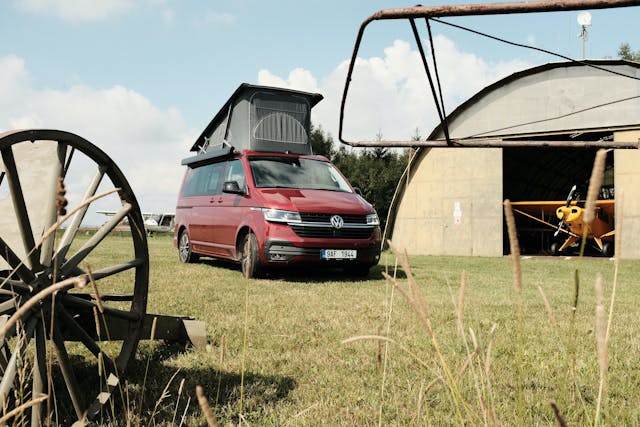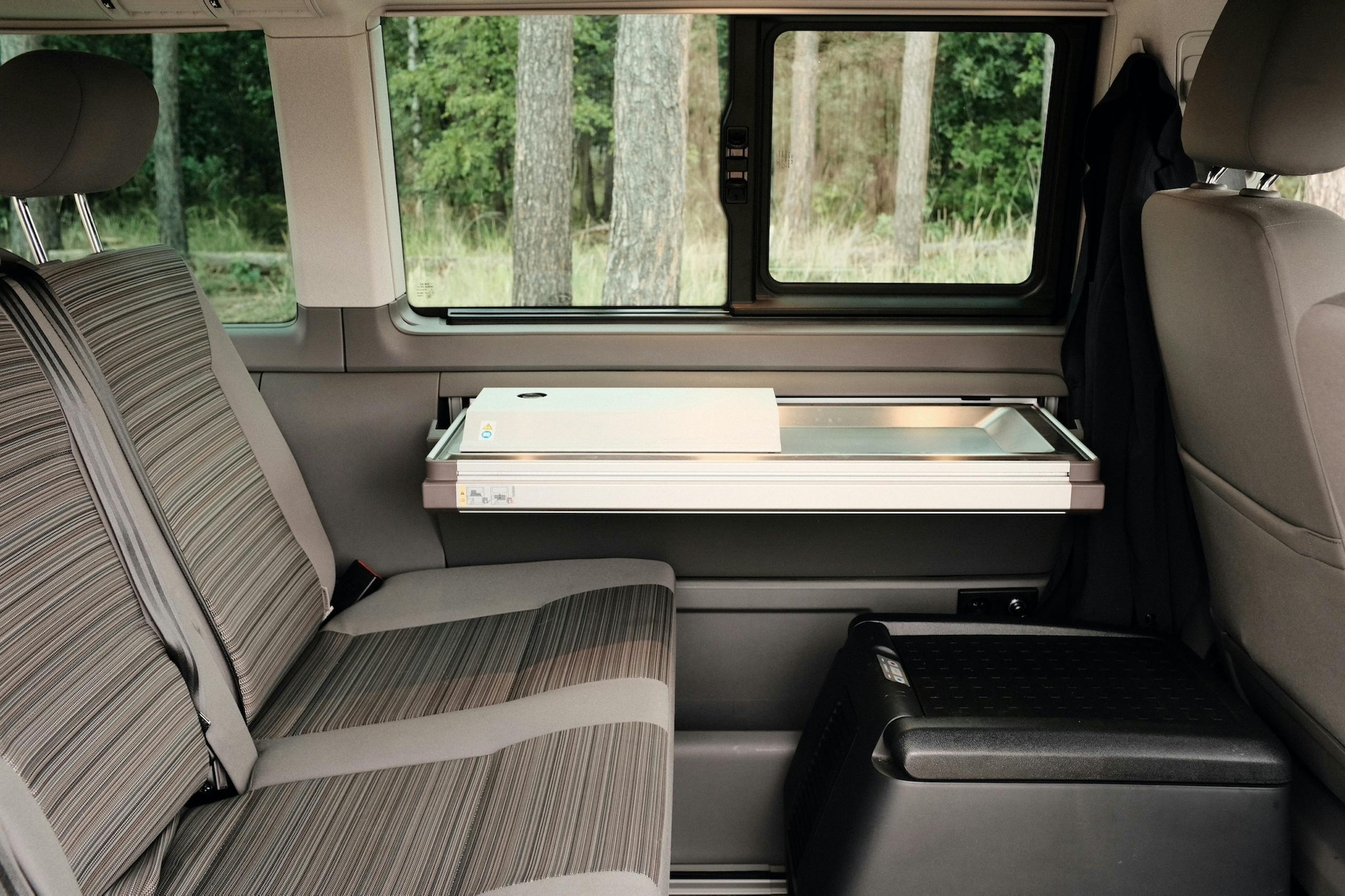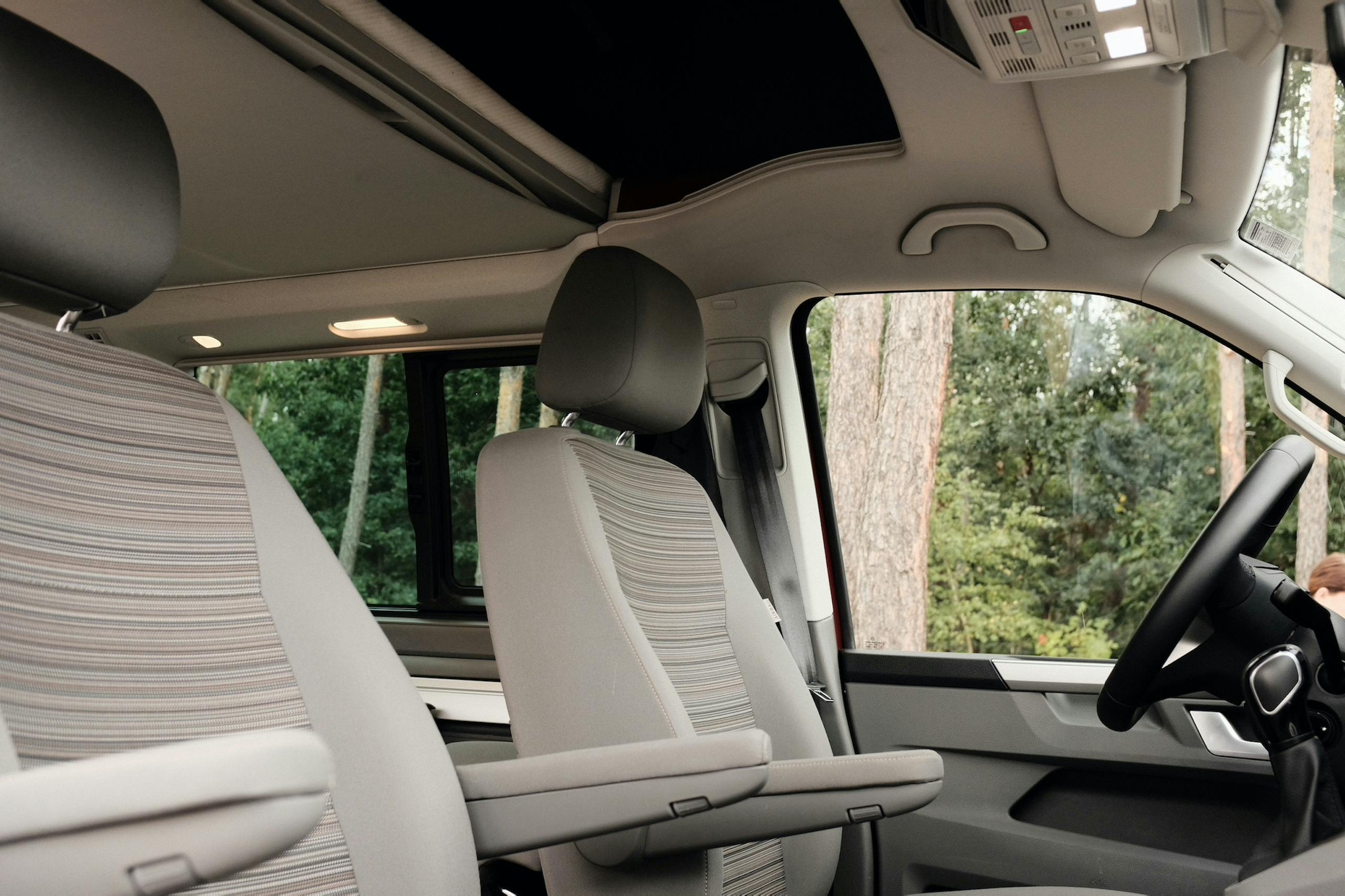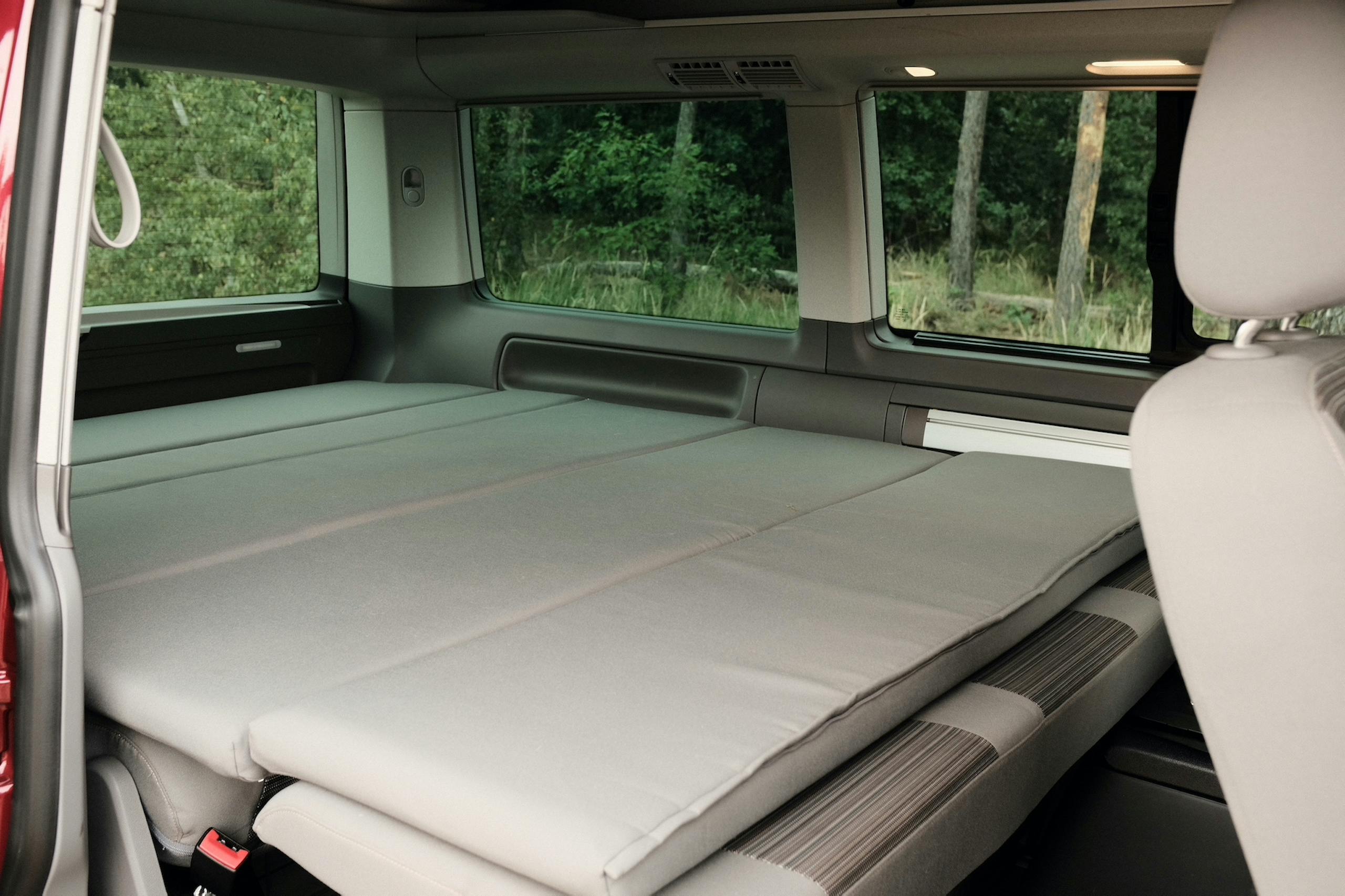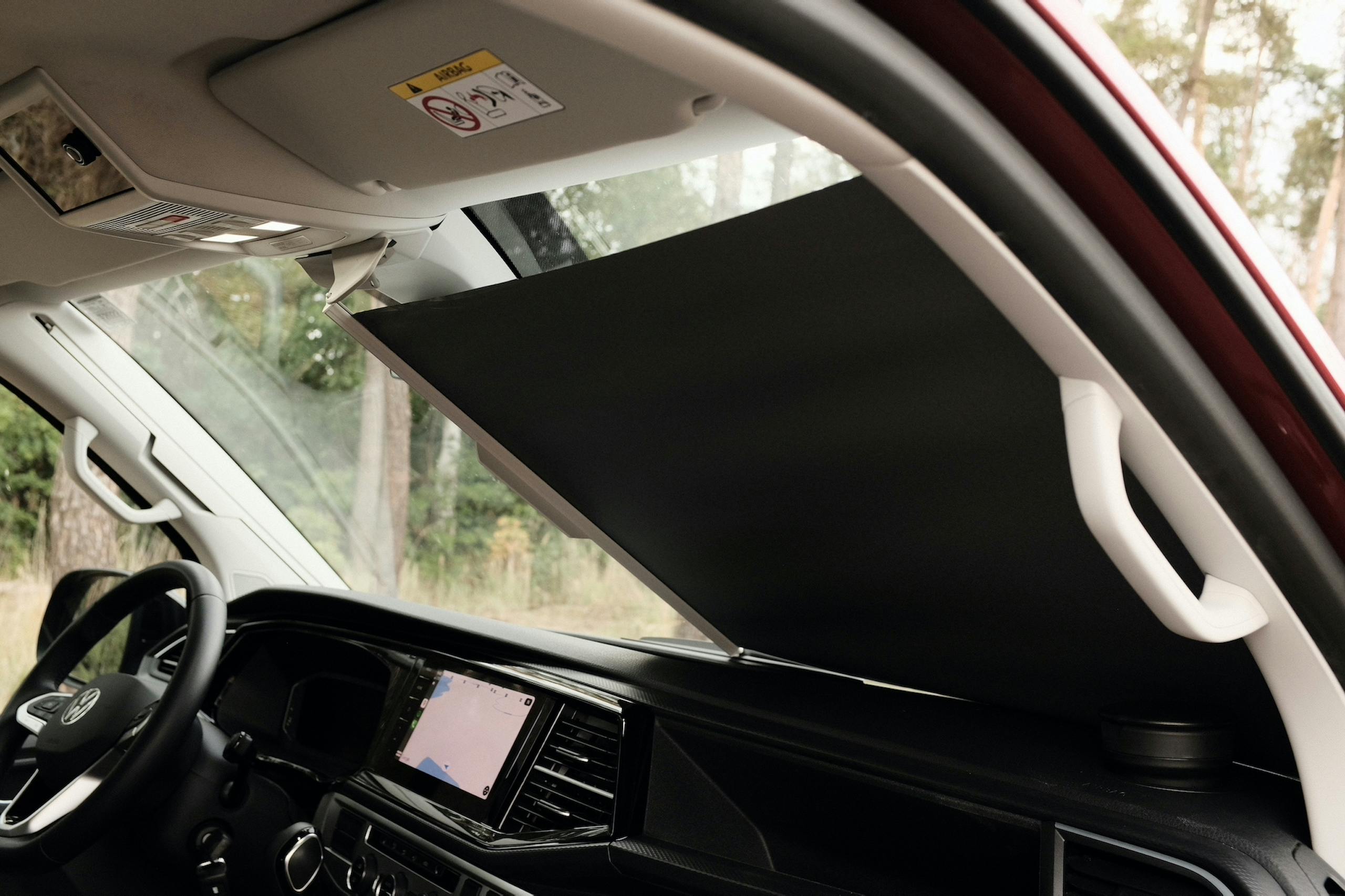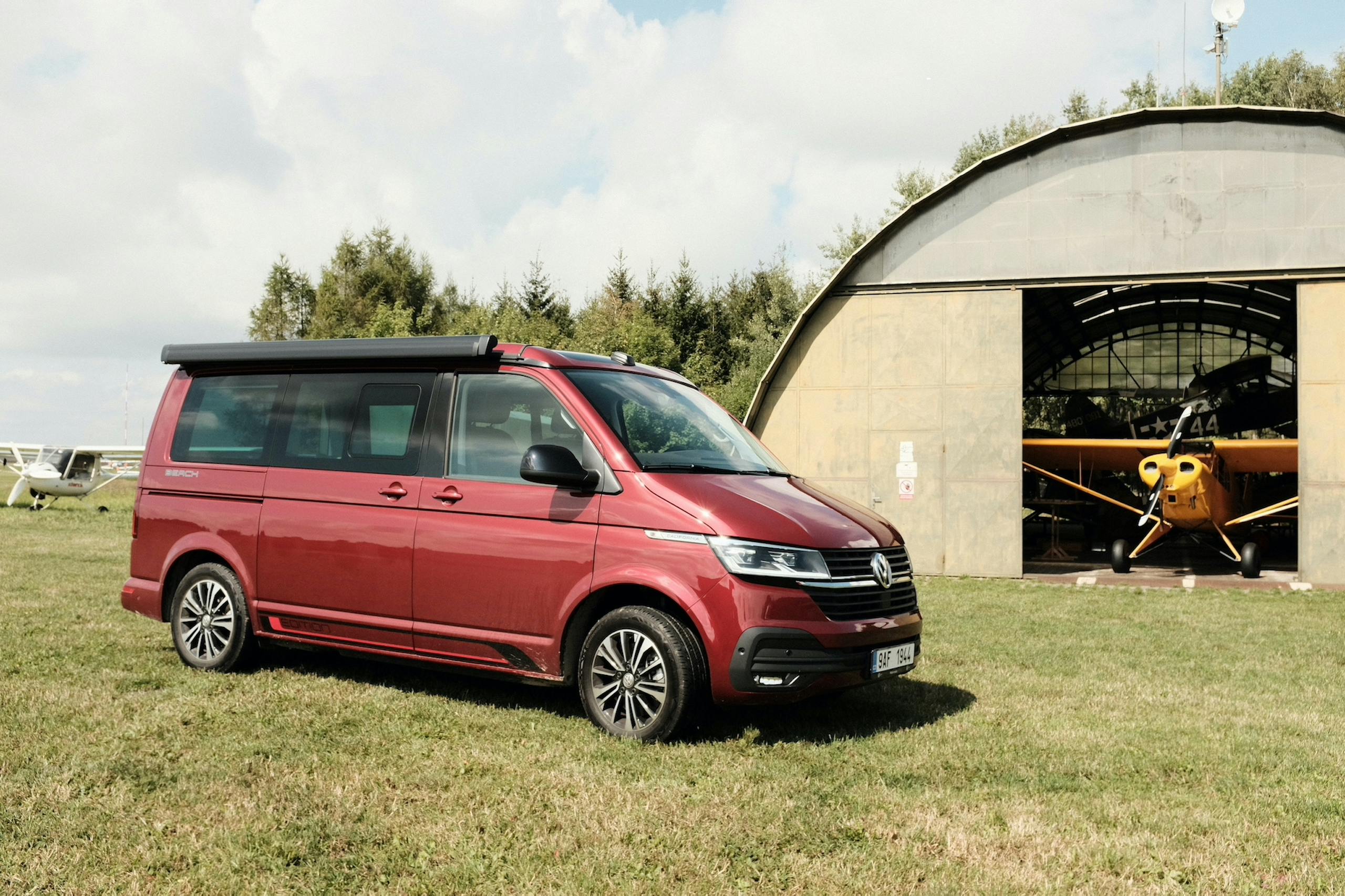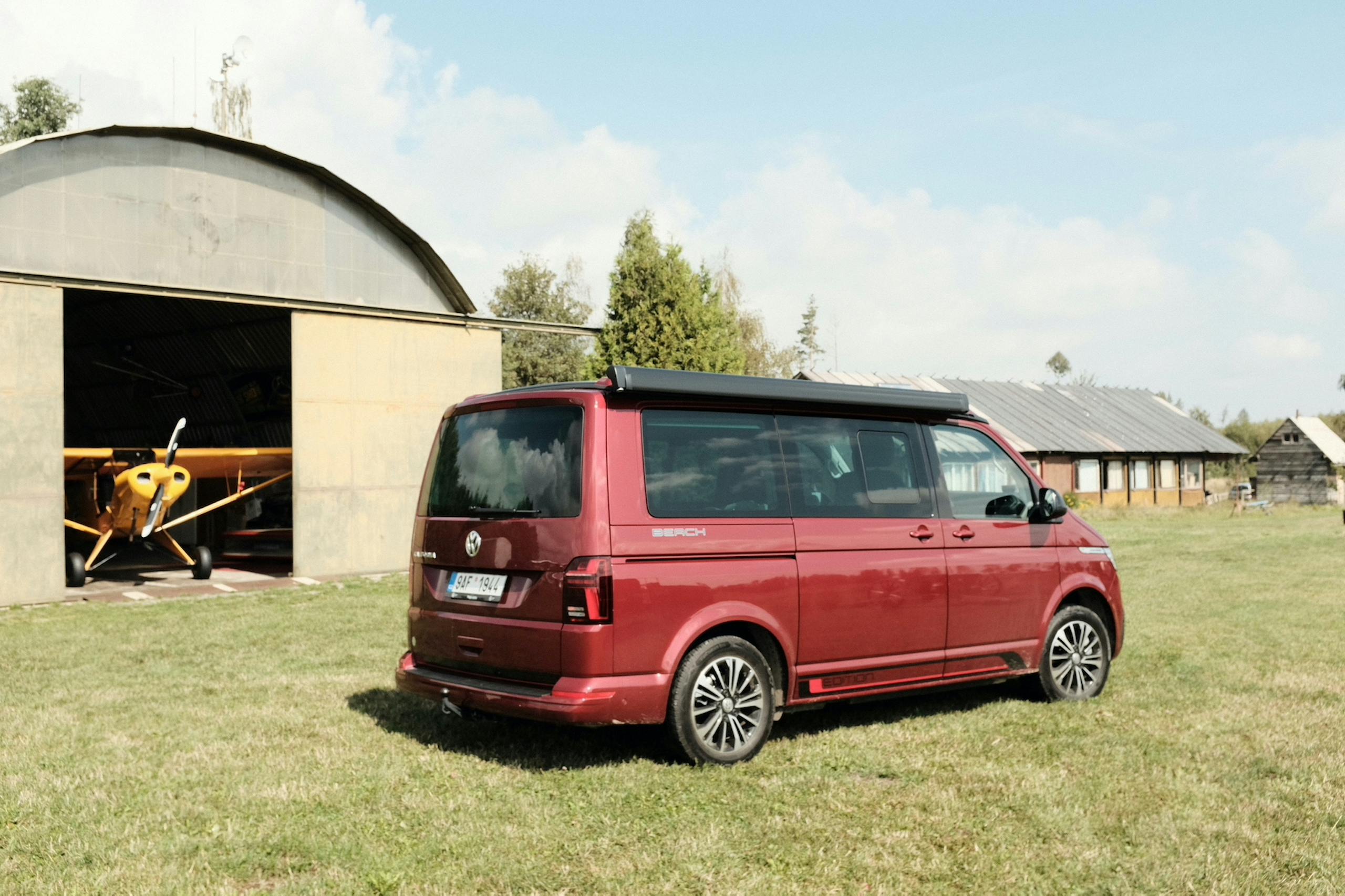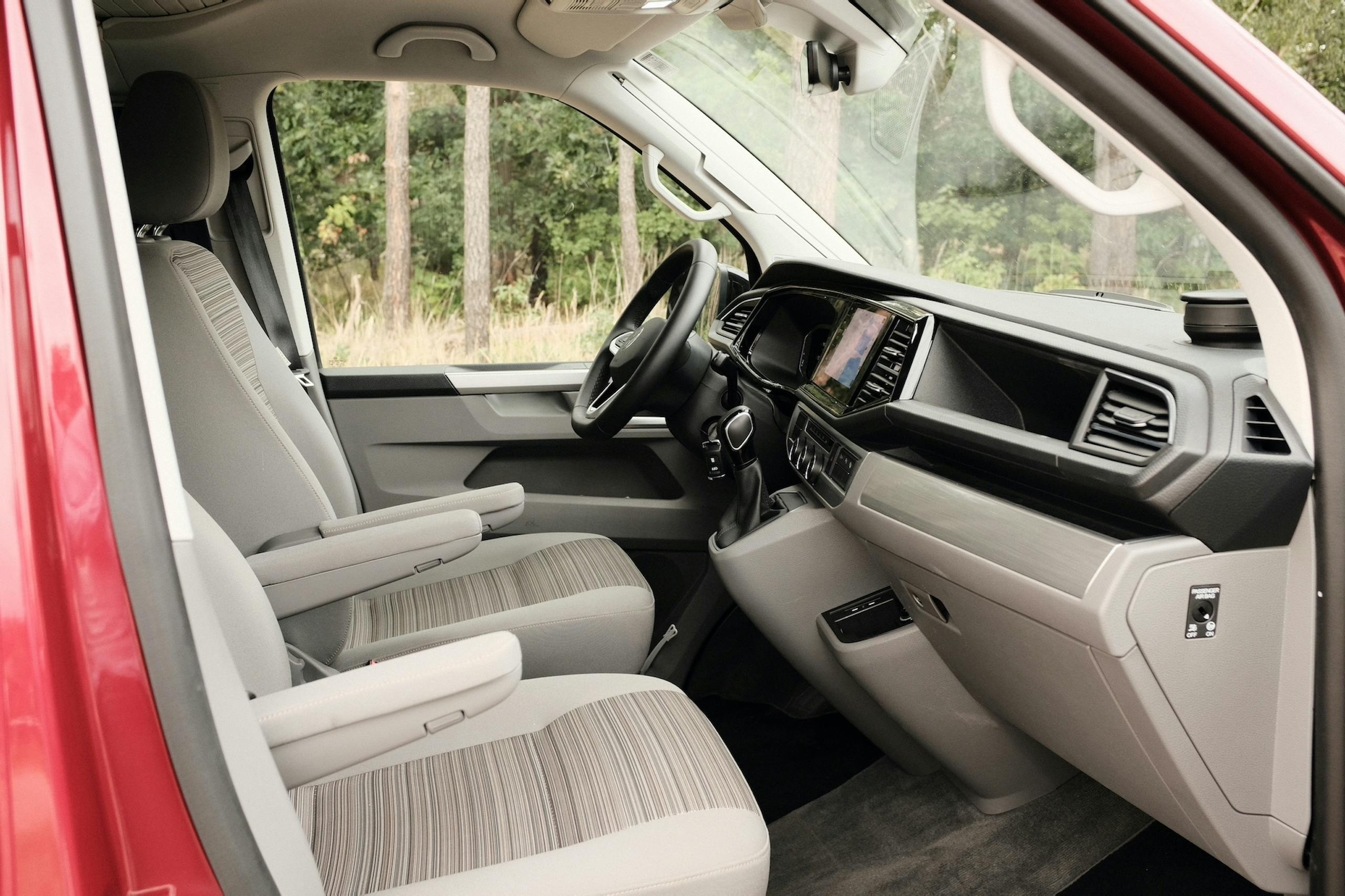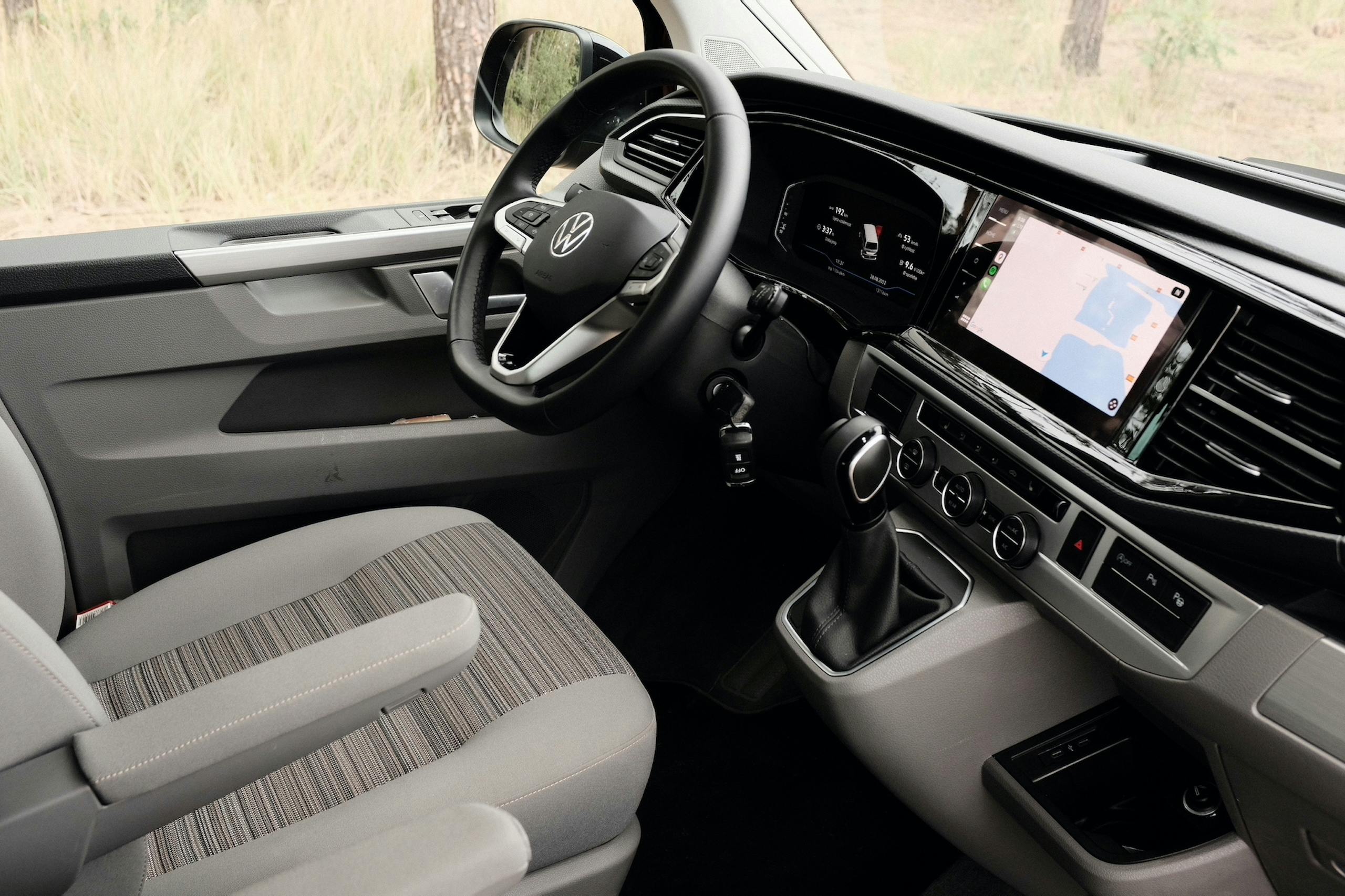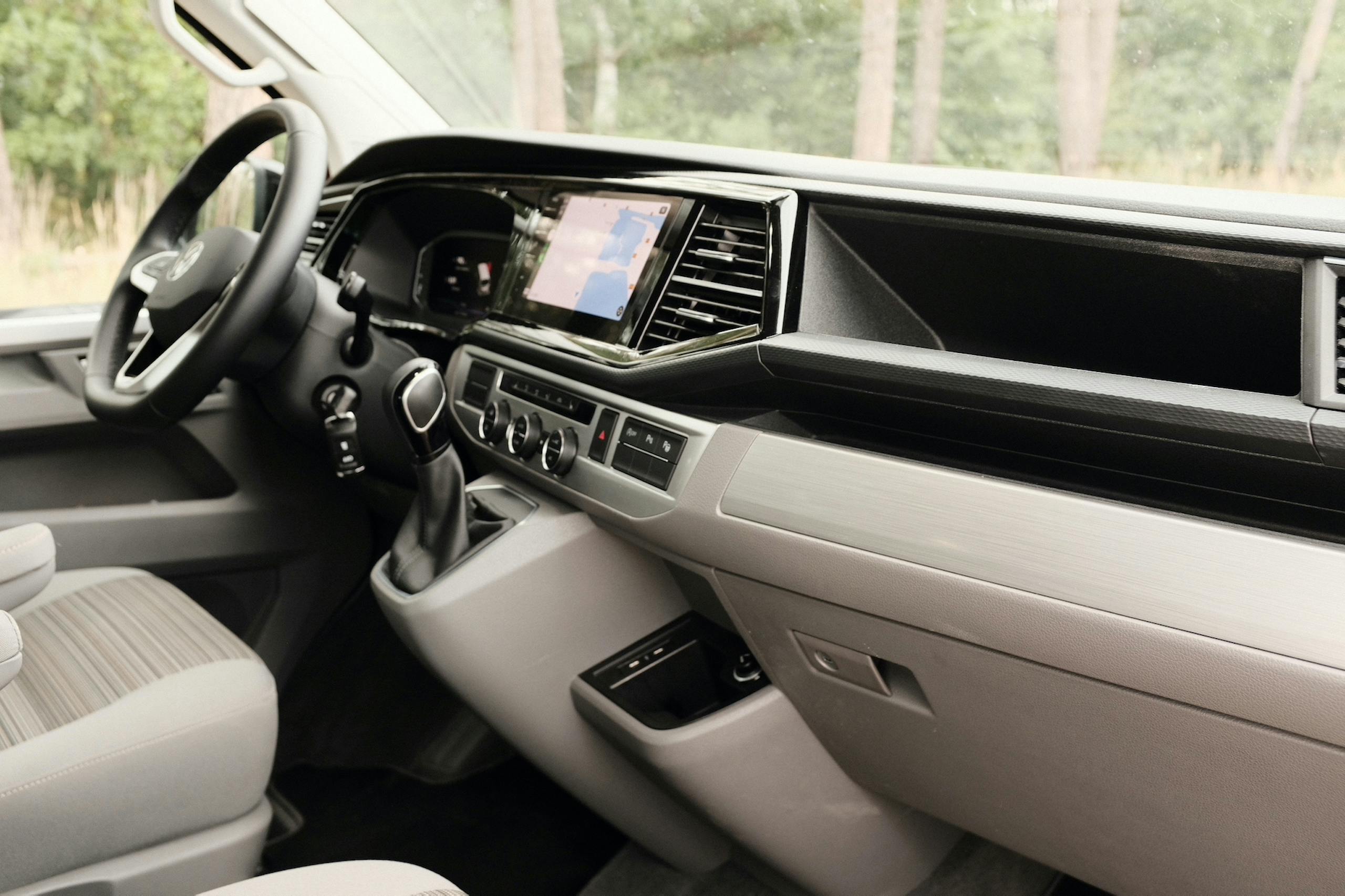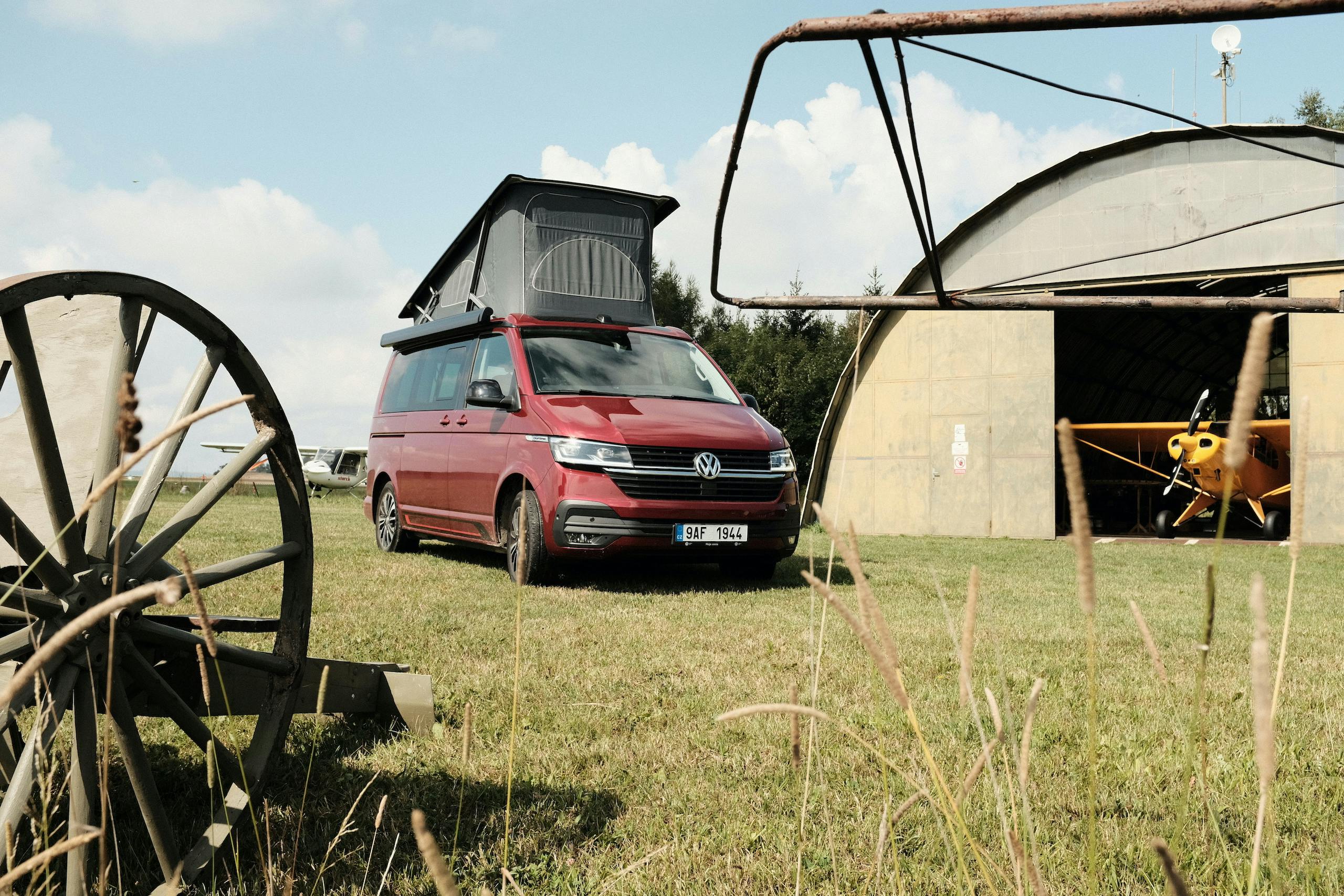Media | Articles
2022 VW California Beach Review: Europe’s do-it-all camper van
If there’s a truly defining difference between the automotive landscapes of Europe and America, it’s visible in our polarized perception of trucks versus vans. On both continents these are among the most common vehicles on roadways. However, from a European perspective the whole idea of a full-size pickup truck is borderline ridiculous. I think most normal Europeans suspect that the whole thing with carpenters and plumbers actually driving V-8-powered, off-road vehicles as daily transportation is just for the movies.
The truth is that transportation culture and infrastructure is totally different in Europe, and perhaps we simply don’t understand America’s love affair with the versatility, comfort, and durability of pickups. We have affection for vans instead—the quintessence of European rationalism. No hoods. Thoroughly efficient, four-cylinder diesels. Utilitarian design, unpretentious names like Transit or Transporter. It’s a stark contrast with American trucks, which have comparatively huge powertrains under massive hoods, macho names like Ram, and lots of chrome.
Of course, Europeans aren’t immune to indulgences of excess. Much like America has its King Ranch, Denali, and Longhorn, Europe enjoys its Volkswagen Transporter when upscaled to trims like Caravelle, Multivan, or California—the latter of which we are reviewing today.
Here’s a quick lesson: The T6 Transporter is VW’s midsize, transverse-front-engine commercial van, arriving in 2015 and subsequently updated in 2019 with a T6.1 designation. While the base Transporter is a work van, the Caravelle is a nicer, passenger version. The Multivan is (or was, rather) the stylish, near-luxury choice; now it’s basically a minivan on a completely different platform.
The luxurious California camper van is the least common variant, but probably the most interesting version of this line. It’s basically a Multivan you can live in. Or at least sleep in. Despite the success of the original VW Bus and Vanagon in America, there’s nothing quite like it on your side of the pond. Mercedes recently announced it will be killing the Metris for North America (or as we call it, the Vito), including the Weekender camper, and the all-electric VW ID. Buzz isn’t due until the 2024 model year.
Marketplace
Buy and sell classics with confidence
There’s always a pickup truck with a camper box, but it’s hardly the same thing.
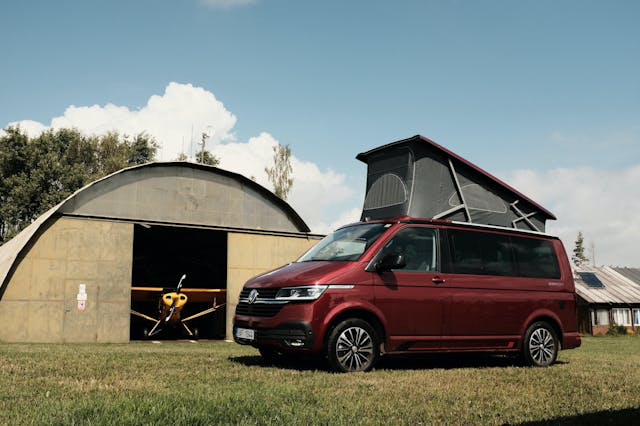
The Germans have this camper van formula down to an efficient science. They make the interior versatile enough to still work as a van to transport things and/or people, yet it’s also perfectly viable as a living space. Of course, the idea is not exactly new. Volkswagen contractor Westfalia first started to modify the VW Bus into a camper in the 1950s.
That van, then in the form of VW’s timeless T1, was fitted with folding rear seats, which made a bed; some tables; and, in some cases, even a basic kitchen. The signature “pop-top” was added to allow the occupants to stand inside and, later, to create room for another twin bed. For a long time, these camper vans were manufactured by Westfalia and other outside companies under various names, but since 2005 VW has built them in-house.

California campers come in two styles: Beach and Ocean (formerly, there was also a mid-level Coast trim). The Ocean is what most Europeans imagine when you say VW California, or VW camper vans in general. Behind its front seats, which can be rotated 180 degrees, there is a small kitchen complete with sink and stove. You can even hook an outdoor shower to the kitchen’s water tank. There’s no toilet, of course, but other than that, you have tiny version of everything that you need in an RV. The downside? It turns the California into a four-seater. No third row, not even a third seat in the second row. And, of course, significantly reduced cargo space.
That’s why you might want to choose the “lesser” Beach version, reviewed here. Removing the kitchen and the water tank makes the interior is almost back the capacity of a normal Caravelle or Multivan. At the first glance, you might not even notice that it’s a camper. That’s important not because a camper is something to hide, but because people are buying these Californias as everyday cars. Starting price, accounting for currency conversion, is about $50,000 for the base Beach.
Our California Beach was a five-seater with only the second-row bench, but it can be fitted with another one to seat eight total. If you forgo the kitchen entirely, you can even have sliding doors on both sides—easier for not only day-to-day living, but also for camping. You can also opt for the “kitchen-lite” version, in which you lose the left door but gain a pop-out table with a single-burner stove. That’s the configuration you see here.
This is probably one of the most versatile automobiles you can buy right now, maybe even the most versatile. On the footprint of a midsize sedan (length 193 inches, width 75), you can have up to eight seats (workhorse Transporter can have nine, with three-across sitting in the front): the front ones rotating, the rear benches able to slide back and forth, creating either more legroom or space for luggage or cargo. You can also remove the rear seats and have a spacious van, capable of many van things, including—but not limited to—the ability to turn you into “that friend with a van,” called upon whenever someone is moving or buying furniture.
All of this can, of course, be said about the Transporter, Caravelle, and Multivan. The great thing about California Beach is that it retains all of those models’ abilities and adds a whole new dimension without many drawbacks.
We’ve already mentioned the kitchen. Then there’s the pop-up roof, which doesn’t remove any noticeable amount of headroom in its normal state, yet can open to reveal enough space to stand up or provide two places to sleep, depending on whether you raise the bed or not.
Similarly, the downstairs bed doesn’t take up too much space when not in use. Its base consists of the second-row bench, folded down, and a sort of a “tray” above the trunk area, over which you’ll unfold the mattress, normally stored on the tray. You can also easily take it out and store it elsewhere, if it’s not in use. The tray will take a little work to remove, but it can be done.
Then there’s the cooling/heating box, mounted into the floor rails of the rear seats, which can also be taken out or mounted anywhere you want it—in front of the seats, in the “trunk,” anywhere. We’ve already mentioned the hidden table with the burner, and the gas bottle behind the side panel. On the other side, there is a picnic table hidden in the door and two chairs to match, hidden in the tailgate. The only thing you’ll really notice at first glance is the roll-out awning above the sliding door.

Features galore, yes. But what’s remarkable is how very slick and efficient the California is to operate. True, it might take you some time to figure out how to stow the table or chairs in the doors and tailgate. Sliding and folding out the rear bench is quite challenging the first couple of times. But in short order, everything just clicks. There is a nice touchscreen display to control the power roof and some other features, like independent heating, the LED lights (there are a lot of them), the battery charge, the inclinometer (so you can find the most level place for setting up camp) and others.
Still, the idea of a camper that’s also functional as an everyday vehicle works only if the underlying van itself can stand in for the family car. While this is very much the case in the original T1 (aka Type 2) based on the Beetle’s chassis, the vans of the decades in between weren’t so great. It got better starting with the T5 that came out in 2003, but the T6 and especially the current T6.1 generations of the Transporter/Caravelle/Multivan/California family have made great steps in the right direction. Many less discerning motorists would even say that the California behaves like an 80-inch-tall Golf.

Yes, for a van the California’s handling is quite impressive. It’s stable at German highway speeds—over 100 mph—and you can drive it briskly on backroads. Doing so is a weird sort of fun. The steering is precise enough and the suspension controlled enough for you to actually consider proper line through corners. It’s nowhere near a normal car or even a good SUV, of course, but there’s a sense of precision that wasn’t present in the old, lumbering VW vans.
Even the environment is very much Golf-like. The steering wheel is actually from the seventh-generation Golf, as is the infotainment and even the digital dash. Of course, the angle of the steering wheel is much different, and you sit in the driver’s seat like it’s a chair. There is one other key difference: You can actually see out of the California, in all directions. With high seating position and low window sills, it’s a bit like the “commanding position” that so many people love about SUVs like the Range Rover. What’s even better is that with virtually no hood, you have perfect view in front of the car, which means you don’t need a 360-degree camera system to park without bumping anything.
Even the drivetrain is, once again, carried over from smaller VWs. The fallout of Dieselgate wasn’t as severe in Europe, and we care a bit more about efficiency because fuel is so expensive, so European customers still love TDIs. The California offers a base 2.0 turbodiesel with 110-, 150-, and 200-hp versions available as an options and a choice of a six-speed manual or seven-speed DSG dual-clutch automatic.
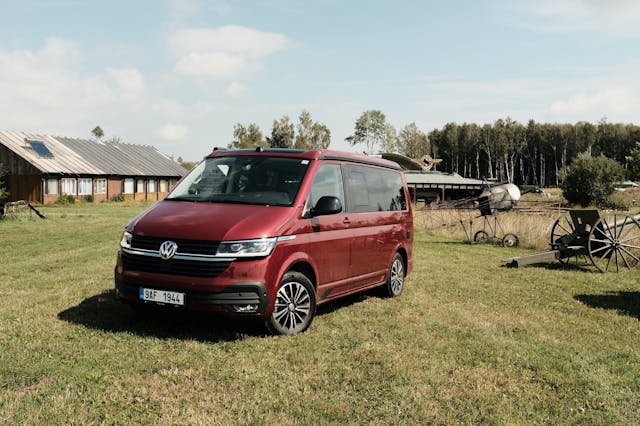
Only the fastest version breaks 11 seconds to 100 km/h (62 mph). In other words, they’re all slow. Our tester with a 150-hp TDI and DSG with front-wheel drive (all but the 110-hp versions are also available with 4Motion all-wheel drive) gets there in 14.3 seconds. In Europe, there are still passenger cars that are slower, so even this version is quick enough to go with the flow, while the 200-hp one (0-to-100 km/h in 10.9 seconds) is capable of fairly brisk pace, thanks to its 450 Nm (331 lb-ft) of torque.
For all that, you will burn around 9 liters per 100 kilometers in normal driving (around 26 mpg), dropping to maybe 11 or 12 if you’re particularly lead-footed or trying to make use of Autobahn’s absence of speed limit. (I never tried it with this California, but I have, ahem, reasons to believe that a T6 Transporter with the 150-hp engine is able to reach 120 mph). That’s still over 20 mpg.
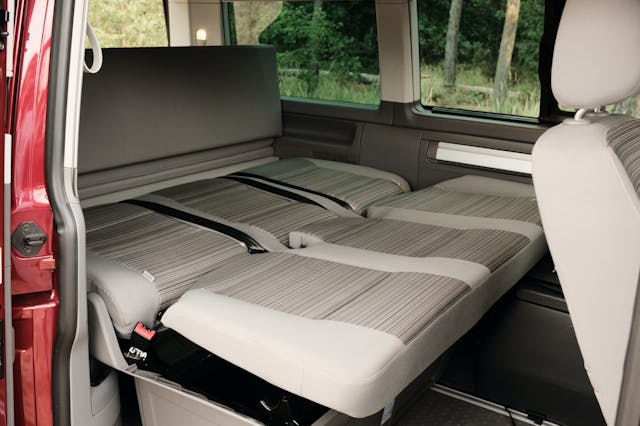
Is this the perfect car for everything, or what? Much in the way U.S. pickups have evolved into a utility vehicle that can also replace a luxury SUV, the California offers similar delights through a European lens. They have something of a cult following. Much like the T1 and T2 won the hearts of hippies and surfers, the T4s (known in U.S. as the Eurovan), T5s, and T6s are popular among everyone from young people living their #vanlife to tradesmen and grocery-shop owners. Some people use them as family transportation that can also serve as a camper or a work vehicle. They might not be as ubiquitous as full-size pickups in America, but they sure are popular.
Why hasn’t Volkswagen introduced these on the other side of the Atlantic? Dieselgate is one reason. I can only guess what the fuel economy of a California fitted with 2.0 TSI gasoline engine of any respectable horsepower would look like, but I’m sure it wouldn’t be pretty. The VW Tiguan with the same engine will have hard time stying under 10 l/100 km (23 mpg) when driven calmly and will easily go over 13 l/100 km (around 18 mpg) when driven with even moderate verve. The T6.1 is much, much larger, with vast frontal area, so I would expect much worse than that. It could actually be worse than a Chevy Express.
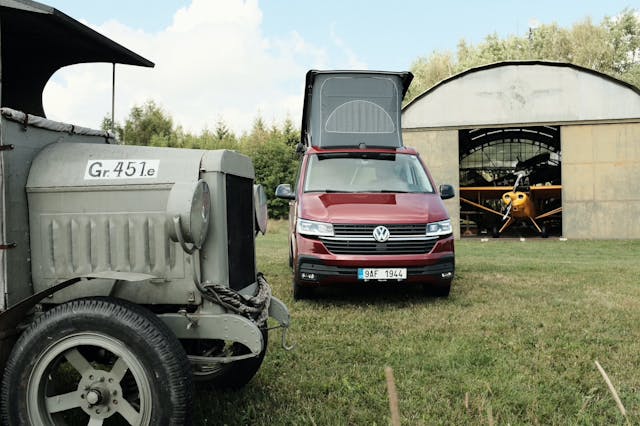
The other probable reason has to do with the realities of ownership amid the hyper-competitive and cost-sensitive U.S. market. While the VW van community swears on the vehicles’ durability, reliability is a different story. T5s and T6s (T6.1s probably won’t be different) are prone to rack up quite nasty bills especially when it comes to engines and DSG transmissions. While these vans are almost as nice to drive as a Golf or Arteon, they are also as complicated and at least as costly to maintain. VW, perhaps correctly, concludes that a van with the running costs of a European “near premium” car wouldn’t sit well with Americans.
Finally, the elephant in the room: purchase price. As-tested, our loaner vehicle (the California Beach with VW’s 150-hp 2.0 TDI engine and seven-speed DSG gearbox) costs around $60,000 before VAT (our devilishly complicated alternative to sales tax). With options? Better sit down. It’s roughly $78,000. The list includes stuff like $7000 for a driving assist suite, over two thousand for dual-zone heating, a $600 awning, and lots of other small bits.

Remember, we’re still in the realm of the front-wheel-drive, kitchen-less Beach. An Ocean fitted with the most powerful engine, the DSG, all-wheel drive, and all the desirable options will set you back more than $100,000. That’s Porsche 911 money. Even then, it’s not quite on the level of opulence that luxury cars or even American pickups offer you. No plush leather upholstery, no wood lining, no swag. Just very functional, efficient German engineering with a bit of stylish flair.
Weird as it might seem to Europeans, the supremely rational and efficient mid-size van—particularly campers like the California—are to the rest of the world rather exotic. They are remarkable, if you think about them. But if you still don’t get what the fuss is about, I understand. From my point of view, your snarling Ford Raptors and goofy Jeep Gladiators are just as inscrutable.
2022 Volkswagen California Beach
Price: $50,000 (est. base) / $78,000 (est. as-tested)
Highs: Brilliant packaging, wonderful versatility, impressive efficiency.
Lows: High cost, sluggish performance by American standards.
Takeaway: Strange it may be, but Europe is still the best place to experience California vanlife in a modern package.
Check out the Hagerty Media homepage so you don’t miss a single story, or better yet, bookmark it.
